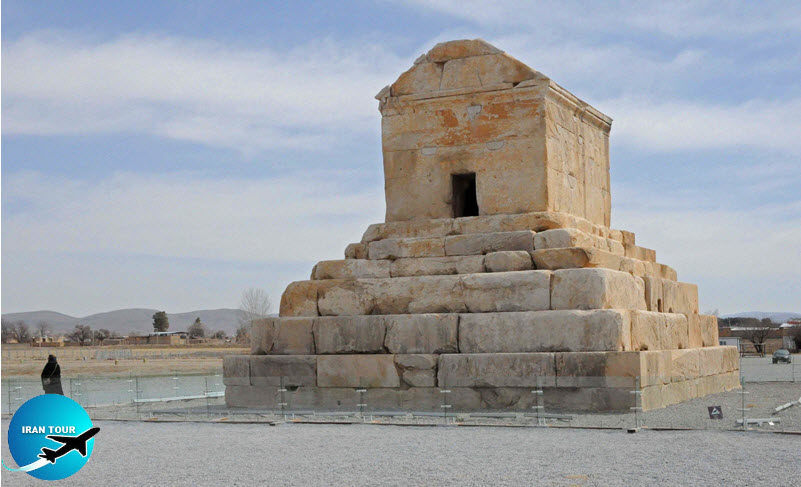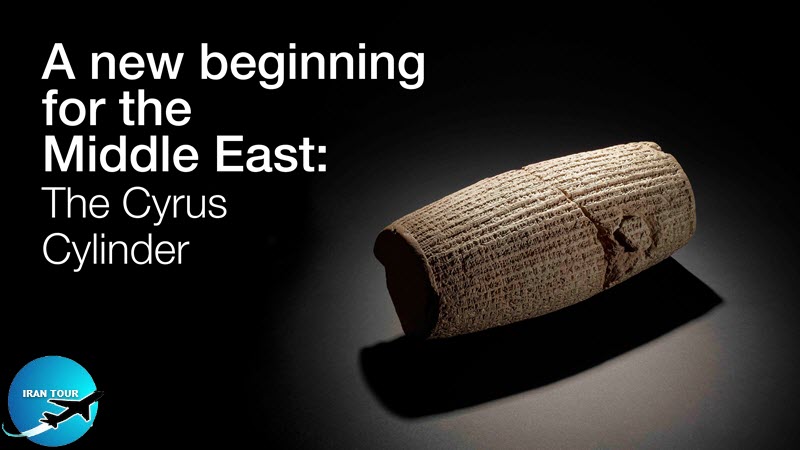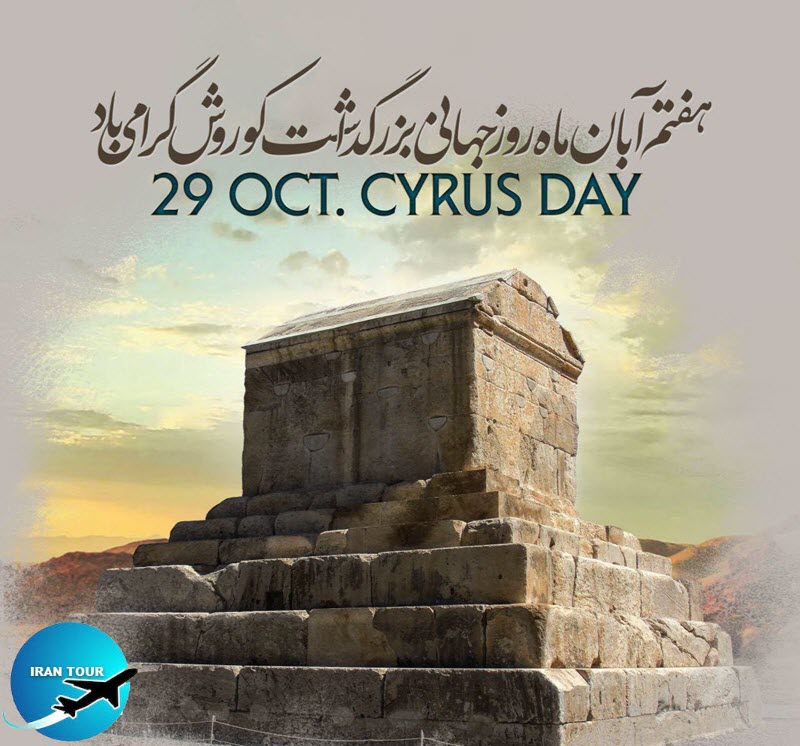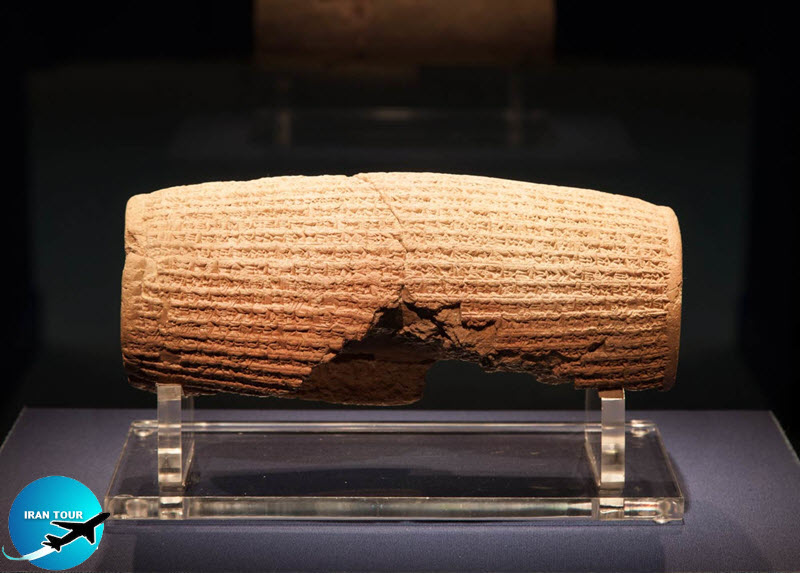Cyrus Day
Cyrus the Great Day is an informal day in Iran that takes place on 7th of Aban, the eighth month on the Iranian calendar – usually occurring on 29 October on the Gregorian calendar – to commemorate Cyrus the Great the founder of Achaemenian dynasty, greatest Iranian Empire. The most outstanding event of this day is Iranian meeting in the tomb of Cyrus, located in Pasargadae.
Pasargad
The tomb of Cyrus the Great was formerly a royal garden and was built by Cyrus himself. Thanks to meticulous calculations the simple monument has survived after 25 centuries nearly intact. The building covers an area of 156 m2 with a height of 11 m. The white alabaster slabs are carefully laid over each other without any mortar, bounded by metal and lead clamps only. The seven story mausoleum is divided into a platform-like staircase serving as the foundation of the mausoleum
and the tomb chamber with a sloppy roof. After the death of Cyrus his body was put in a golden coffin and was laid in his tomb along with his personal effects and weapons.
The tomb has been respected during the history and Achaemenid kings were crowned in the sacred mausoleum. Since there was no document to prove that it was Cyrus's tomb during the Islamic Period it was called the tomb of Solomon's mother.
Stony winged man
This is the most intact and prettiest statue among Pasargad monuments with special philosophical meaning. It shows a man with a short beard, a long clock and a double edged tiara and horned crown surrounded by four wings. The winged man wears a pretty crown set on the horns of a ram and protected by two snakes set opposite each other. Each snake is holding a disc like the sun. Achaemenid architects have borrowed from other nations to fabricate the winged man. The crown is Egyptian, the dress is of an llamite man and the wings are of Assyrian, each representing the nations which were united with each other and subjected to Achaemenid rule by Cyrus the Great.
 |
Sacred Precinct
1200 m northwest of Pasargad there is an ancient building containing two white stone platforms and a rectangular staircase. Known as the Sacred Precinct, the two platforms have been built with white alabaster stones and are equipped with a staircase. The base of the southern platform is 43.2 m in diameter and its height is 16.2 m.
Gateway (Darvazeh) Palace
Covers an area of 726 m2 area east of Pasargad Complex with a large square hall supported by eight stone columns, 16 m high. The ornamented columns show the greatness of the palace. Private Palace 230 m northwest of the Hall of Audience and Pasargad Orchard one can see the remains of a simple palace known as Private Palace or P palace. It is rectangular and houses a hall with 30 columns and an Eyvan supported by 40 stone columns at east and another Eyvan with 24 columns at west.
Royal Orchard
water sprinkling system This is the oldest orchard in Iran known as Cyrus's paradise and an example of first garden in Iran. The orchard was full of various types of trees, flowers and birds and was decorated delicately by Cyrus himself with an irrigation and water sprinkling system. Two small buildings were built at the two sides of the orchard for resting.
 |
Cyrus's Cylinder
Cyrus's Human CHARTER OR Cyrus's Cylinder This cylinder made of backed clay was manufactured in 538 B.C. upon the decree of the Cyrus the Great, the founder of the Achaemanid Empire. Half of the cylinder has been inscribed in Babylonian language and the other half containing the code of Cyrus is written in cuneiform Akkadian (modem Babyionian) tanguage. The cylinder was discovered in Murdoch's temple in ancient Babylon and is now being preserved in the British Museum in London. Cyrus human charter is an excellent manifestation of the patience and magnanimity of the Iranians.
First Declaration of Human Rights by Cyrus the Great Iriscribed in cuneiform on a clay cylinder discovered in 1879 now on display in the British Museums Cyrus the
Great (585-529 BC), the Iranian emperor, defined the First Declaration of Human Rights on this cylinder. Cyrus is admired more as a liberator than a conqueror of his vast empire because of his respect for human rights and the humane treatment of those he ruled. He is Canointed in the Bible (Is. 45:4) as a liberator of God's people
(Is. 45:15) and the chosen one (Is.48:14-15).
Professor Richard Frye of Harvard University said Surely the concept of One World, the fusion of Peoples and Cultures into oneness was one of his important legacies.
The following from this ancient cylinder are a rendition of the spirit of his message in modern English:
1. I declare that I will respect the tradition, customs and religion of the nations of my empire and never let any of my governors to Took down or insult the inhabitants of my nations.
2. I hereby abolish slavery, my governors are ordered to prohibit exchanging men and women as slaves within their ruling domains. Such a tradition should be
exterminated the world over.
3. If anyone oppresses others should it happen, I will take hisher right back and penalize the oppressors
4. Today I declare Freedom of Religion. All are free to choose any religion, live in all regions and take up any job provided that they never violate other's rights. These proclamations ring true today in our times as they did in 538 BC.



